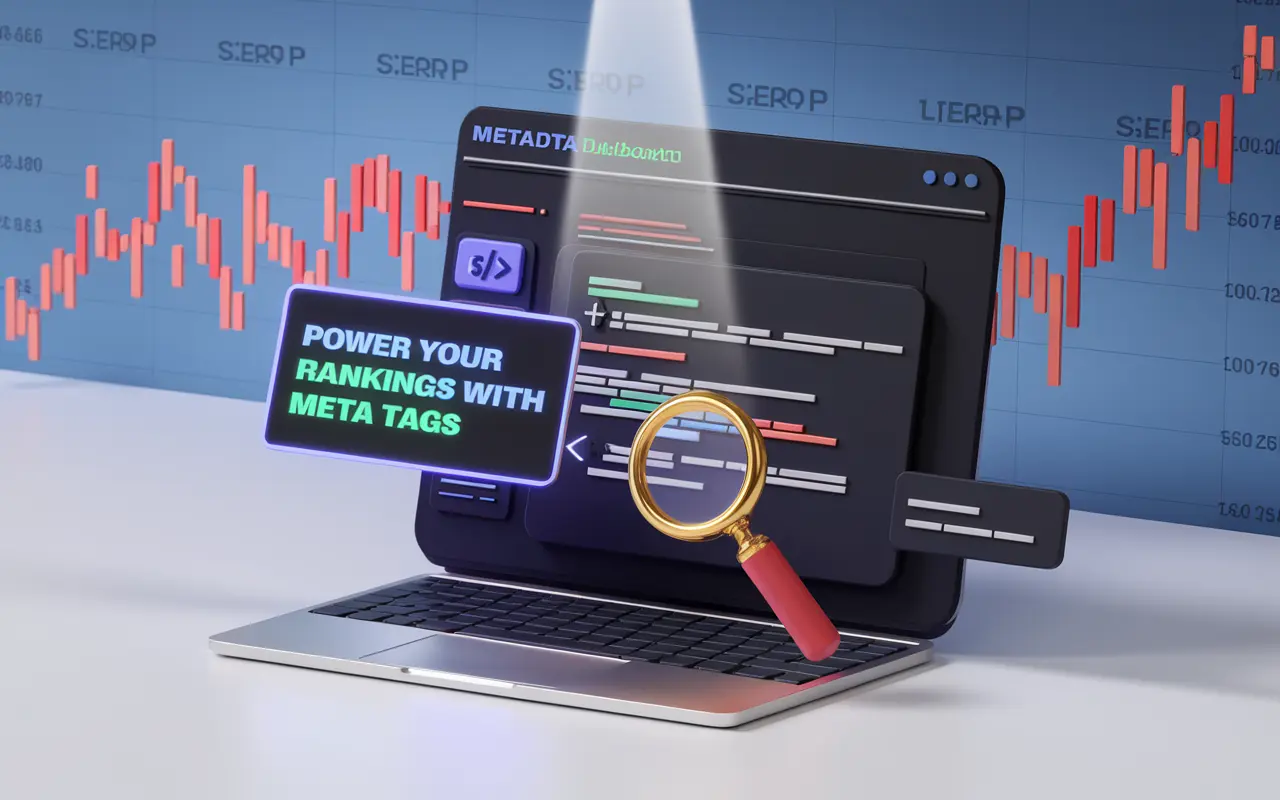Understanding Meta Tags: The Building Blocks of On-Page SEO
Meta Tags are snippets of HTML code that provide metadata about a web page to search engines and website visitors. These tags help describe the contents of a page, which can influence how it appears in search engine results pages (SERPs). Although not directly visible on the page itself, Meta Tags play a vital role in SEO when optimized correctly.
Whether it’s the Title Tag that influences rankings or the Meta Description that boosts click-through rates, Meta Tags work behind the scenes to enhance site visibility. For businesses, optimizing these tags increases search visibility, improves relevance in SERPs, and supports a comprehensive SEO strategy.
Key Takeaway
Key Takeaway
Meta Tags provide critical metadata to search engines, aiding in ranking, relevance, and click-through rates, making them essential for any SEO strategy.
Why Meta Tags Are Crucial for Effective SEO Strategy
Meta Tags act as indicators that help search engines understand the purpose and content of a page. They support SEO by enhancing:
- Crawling and Indexing: Search engines use Meta Tags to determine whether to index a page and how to interpret its content.
- User Experience: By writing compelling meta descriptions, businesses can improve CTR (Click-Through Rate) from organic search listings.
- Targeted Visibility: Optimized title tags help rank your page for specific keywords, targeting the right audience.
Learn more about core SEO strategies here.
Best Practices for Crafting Effective Meta Tags
- Write Distinct Title Tags: Keep them under 60 characters and include the focus keyword early. Make titles engaging and descriptive.
- Optimize Meta Descriptions: Keep them under 160 characters and write in a way that entices users to click. Although it’s not a ranking factor, higher CTRs improve overall SEO performance.
- Utilize Meta Robots Tag: Guide search engines on whether to index or follow the page using values like “index, follow” or “noindex, nofollow.”
- Avoid Duplicates: Each page should have unique Meta Tags to avoid keyword cannibalization and improve crawling.
- Include Structured Data Where Applicable: Use tags like “og:title” and “twitter:card” to optimize for social sharing and rich results.
How Meta Tags Work in the SEO Ecosystem
Though Meta Tags don’t appear directly on the user-facing web page, they send important signals to search engines:
Title Tag
This tag sets the clickable headline on the SERP. It’s one of the most impactful on-page SEO elements. A well-crafted title tag helps search engines understand the topic of your page and improves rankings.
Meta Description
This does not influence rankings directly but helps improve CTR by giving users a snapshot of what the content holds. Think of it as your elevator pitch in SERPs.
Meta Robots
These tags guide search engine bots on whether to index a page or follow its links, controlling how the content spreads across the web.
Viewport and Charset Tags
While not directly influencing SEO, these Meta Tags assist in rendering web pages correctly across browsers and devices, which indirectly supports performance and user experience.
| Meta Tag | Purpose | Impact on SEO |
|---|---|---|
| <title> | Defines the page title | High – Direct ranking factor |
| meta name=”description” | Summarizes page content | Medium – Improves CTR |
| meta name=”robots” | Control indexing and crawling | High – Influences indexation |
| meta name=”viewport” | Mobile responsiveness | Indirect – Enhances UX |
Case Study: How Meta Tags Boosted A SaaS Brand’s Traffic
Problem: Low Organic Visibility & Click-Through Rate
A Software-as-a-Service (SaaS) client had high-quality content but pages were stuck on the second page of Google and had low CTR.
Solution: Strategic Meta Tag Optimization Across Pages
Each page was given a unique title tag targeting high-traffic keywords. Meta descriptions were optimized to include compelling call-to-actions and keyword variations. Meta Robots tags were cleaned up to ensure important pages were crawlable.
Results: 45% Increase in Organic Traffic and 38% Higher CTR
Within 60 days, the client experienced a 45% increase in organic sessions and a 38% improvement in page-level click-through rates across optimized pages.
Common Mistakes to Avoid with Meta Tags
- Duplicate Meta Tags: Leads to keyword cannibalization and confusion for search engines.
- Keyword Stuffing: Overloading titles or descriptions with repeated keywords can be penalized.
- Missing Tags Altogether: Pages without title or description tags can appear incomplete in search results.
- Not Updating Tags for New Content: Tags should evolve alongside your content updates to remain relevant.
Related SEO Terms You Should Know
Explore additional terms related to Meta Tags:
- Title Tag: The HTML element that defines the title of a web page. A critical SEO factor.
- Meta Description: A summary of the page shown in search results.
- Technical SEO: Optimization efforts to enhance a website’s infrastructure, including tags.
FAQs About Meta Tags
Meta Tags are snippets of HTML code in a web page’s head section that provide metadata to search engines and users about the page content.
Title Tags influence rankings directly, while Meta Descriptions improve click-through rates. Other tags, like robots meta tag, influence indexation and crawling.
Title Tags should stay under 60 characters. Meta Descriptions should be under 160 characters to prevent truncation in SERPs.
No. Each page should have a unique Meta Description to improve search relevance and user experience in search listings.
Conclusion: Tap Into the Power of Meta Tags for SEO Growth
Meta Tags are foundational for effective on-page SEO. They give search engines essential cues about a webpage’s content, help pages rank appropriately, and influence user decision-making in SERPs. Businesses committed to SEO success must prioritize Meta Tag optimization as part of their broader strategy.
Start auditing and optimizing your Meta Tags today or explore deeper SEO services here.






